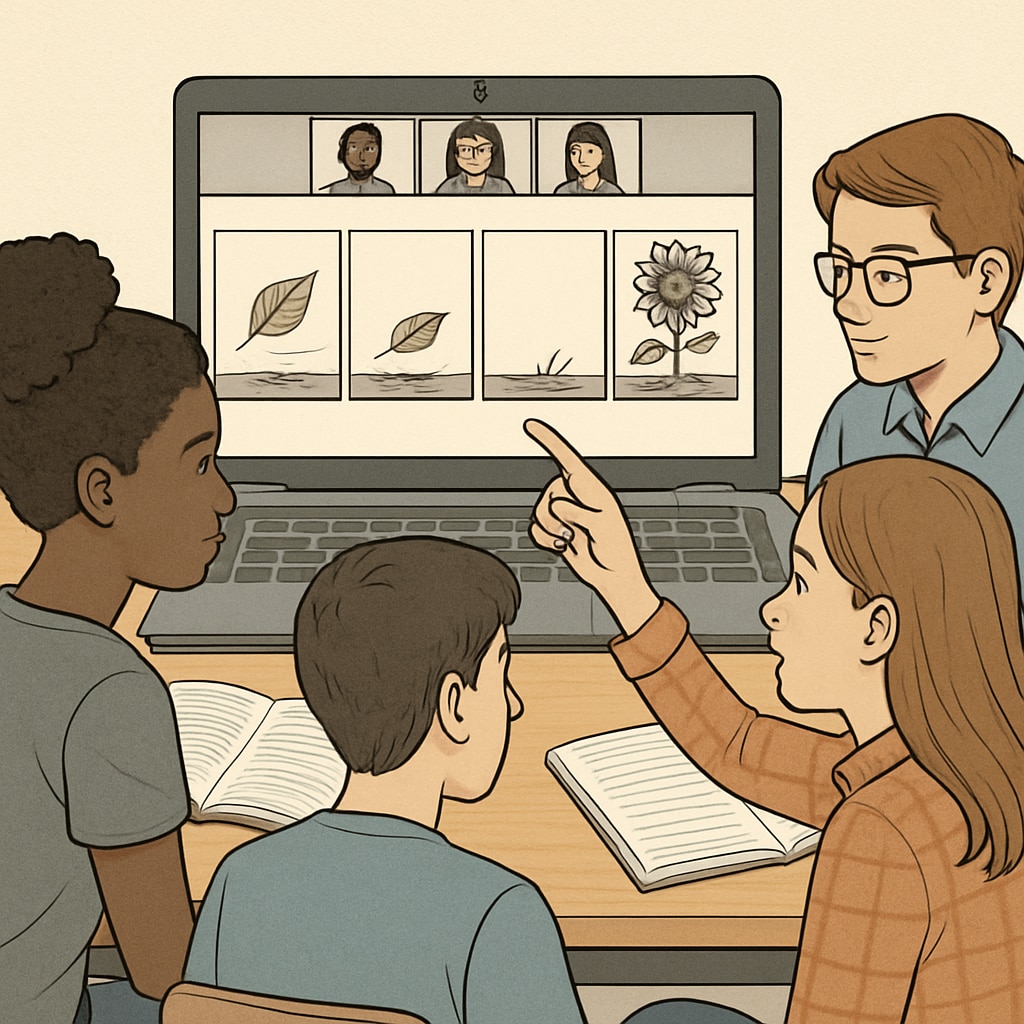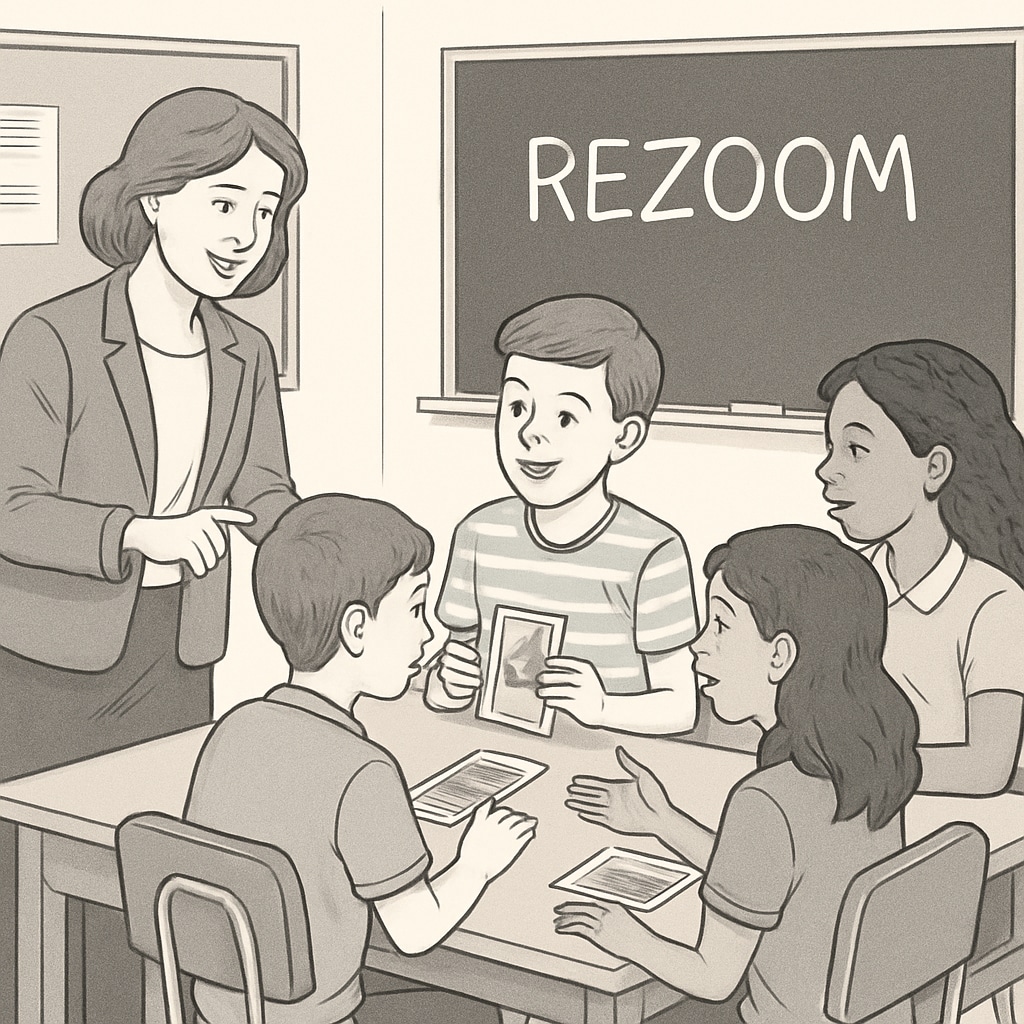Zoom and ReZoom teaching activities are innovative tools designed to enhance visual thinking and logical reasoning among students. These activities, based on collaborative storytelling through sequential images, challenge participants to uncover connections and construct narratives without explicit instructions. For educators, the lack of standard answers can make implementing these activities daunting. This article offers a comprehensive guide to help teachers navigate the Zoom and ReZoom teaching activities effectively and foster a dynamic learning environment.
Understanding Zoom and ReZoom Activities
At their core, Zoom and ReZoom are picture-based books that rely on a sequence of images to tell a story. In the original “Zoom” book, each image zooms out to reveal a broader perspective, while in “ReZoom,” the images zoom in, focusing on the details. These activities encourage students to think critically, communicate effectively, and collaborate to form a coherent narrative. The goal is to recreate the sequence by interpreting the images and discussing their relationships.

How to Implement Zoom and ReZoom in the Classroom
Implementing these activities successfully requires preparation and facilitation skills. Here’s a step-by-step guide:
- Divide the class into small groups: Smaller groups ensure active participation, as each member receives an image to analyze and contribute to the discussion.
- Distribute one image per student: Randomly assign images from the book, ensuring students cannot see others’ cards initially.
- Set clear rules: Students should only describe their image without showing it to others. This fosters verbal communication and interpretation skills.
- Encourage collaboration: Groups must work together to piece the sequence correctly. Teachers can provide hints if necessary but should avoid dictating the order.
- Debrief and reflect: Once the activity is complete, discuss the process. Ask students what strategies worked, what challenges they faced, and how they resolved disagreements.
To ensure smooth facilitation, familiarize yourself with the image sequence beforehand. This will help you guide students without giving away the answers.

Practical Tips for Finding Answers Without a Key
One of the most common challenges for educators is the absence of a standard answer key. Here are some practical strategies to address this:
- Analyze the images: Look for visual clues such as recurring characters, objects, or backgrounds that indicate the sequence.
- Encourage open-ended thinking: Remind students that multiple interpretations are valid, as long as they can justify their reasoning.
- Use trial and error: Let groups experiment with different sequences until they find the most logical flow.
- Leverage peer review: Have groups present their sequences to the class and explain their thought process. This allows for collective feedback and alternative perspectives.
By focusing on the process rather than the outcome, students develop essential critical thinking and teamwork skills.
Benefits of Zoom and ReZoom for Students
Zoom and ReZoom teaching activities offer numerous educational benefits:
- Enhanced visual literacy: Students learn to interpret and analyze visual information critically.
- Improved communication skills: Describing images verbally helps students articulate their thoughts clearly.
- Stronger collaboration: Working in groups fosters teamwork and problem-solving abilities.
- Creative thinking: The open-ended nature of the activity encourages imaginative approaches to storytelling.
These skills are transferable to various academic and real-world contexts, making Zoom and ReZoom valuable teaching tools.
Conclusion
Zoom and ReZoom teaching activities provide a unique and engaging way to develop students’ visual thinking and logical reasoning skills. While the absence of standard answers may seem challenging, it also offers an opportunity to embrace creativity and collaborative problem-solving. By following the strategies outlined in this guide, educators can confidently implement these activities and create a dynamic, student-centered learning environment.
Readability guidance: Use short paragraphs and lists to summarize key points. Ensure a balance between theoretical insights and practical tips. Incorporate over 30% transitional words such as “however,” “in addition,” and “for example” to improve flow.


